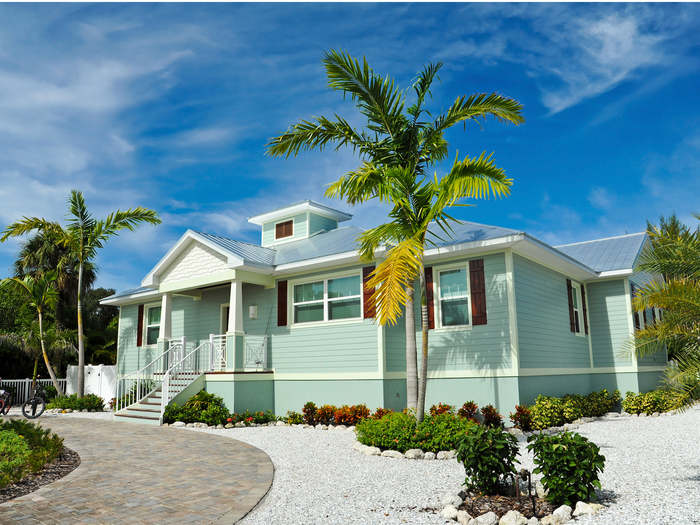One of the most important aspects of ensuring that your short-term rental home achieves its full potential is to use Airbnb pricing. When it comes to price optimization, however, the fact is that it takes a lot of effort and planning.
Since its inception in 2007, Airbnb has been a significant industry disruptor, with over 5.6 million listings in over 220 countries. Hotels have lost around $450 million per year in direct revenues to Airbnb for the last several years. With Airbnb’s rapid expansion, it’s evident that developing a solid pricing plan is essential if you want to get the most out of the site.
This post will outline a few thorough pricing schemes and their benefits and drawbacks. But first, it’s critical to understand what main considerations you’ll need to make when determining your price. You should take notice of the following main points.
1. Take into account the location of your property
When deciding your price, the first factor to consider is the location of your property. It’s also critical to consider how your location would affect Airbnb demand.
Consider if the location in which your property is situated has many special qualities, such as tourist sites or theme parks, that might fuel year-round demand. If this is the case, you will be allowed to set your Pricing as high as you like for the majority of the year.
On the other hand, if your city has large festivals or events that take place exclusively during particular seasons, demand will vary as the seasons change. As a result, you may need to adjust your price as the seasons change.
Local norms and regulations, as well as any travel constraints to and from your region, are further price influencers to consider.
2. Pick a specific guest to target.
The kind of audience your property will appeal to is crucial when it comes to price.
Suppose your Airbnb is offering luxury accommodations to attract guests with large wallets. In that case, it should be charged at the highest cost possible to represent that you are delivering a lavish holiday.
Similarly, if your resort is aimed at budget-conscious guests such as students or backpackers, your nightly rate should reflect the low costs they’re searching for.
Then you’ll have to think about which sub-groups of vacationers your resort may cater to. Families with children, couples on their honeymoons, Gen Z travelers, and entrepreneurs are all possible candidates.
The expectations of each of these categories of passengers will be different. Customizing your Airbnb to meet these expectations will help you predict how your nightly Pricing will fluctuate based on the sort of visitor you wish to attract.
3. Consider the kind of property and amenities available.
Consider the conveniences you supply while deciding on a price. If you go above and above the fundamentals, your property is entitled to increase nightly rates. A swimming pool, a hot tub, or spectacular vistas may dramatically increase the cost of your stay.
Your home type is also a key pricing driver. Larger, more lavish hotels will appeal to tourists ready to pay more for extravagance, and as a result, these properties might command a higher price point.
Smaller homes and shared spaces, on the other hand, will need to be priced cheaper to compete with other kinds of properties that provide the same service.
4. Make a budget for your expenses
The primary purpose of every Airbnb company is to make money. This implies that, although pricing your Airbnb to beat the competition is vital, your price settings must offset the costs of operating it.
Calculate all of the expenditures you may anticipate while managing your rental before deciding on your price, and then make sure your nightly rate is high enough to pay your expenses and bring in cash.
Service fees, cleaning charges to maintain your property spotless, repair and maintenance costs, and supply restocking are some of the things you’ll need to include in your calculations.
5. Use analytics to properly price your products
With so many factors to consider, Airbnb pricing may get fairly difficult for any host. Fortunately, there are clever tools that may assist you in making the procedure easier.
AirDNA, AllTheRooms, and Transparent are examples of analytics tools that keep you up to date on vacation rental market trends and advancements. They provide you access to market data and insights that you can use to figure out how to price your products and help you develop a sustainable pricing plan.
6. Align Yourself with Your Company’s Goals and Objectives
Setting goals and objectives as part of a well-structured business plan will help guarantee that your Airbnb company succeeds in both the short and long term.
Keep these objectives in mind when making judgments and setting your Airbnb price.
If you want to make a certain amount of profit each month, for example, your price should be set at the level required to achieve that objective while still accounting for your expenditures and occupancy targets.
Alternatively, suppose you have set a goal to accommodate a particular number of people in your location each quarter. In that case, your Pricing must stay competitive and appealing to visitors to attract additional reservations.
7. Find out who your competitors are
Consider this: every tourist who looks at your Airbnb and considers booking also examines several other homes comparable to yours.
Your Airbnb must provide more value than the competition to earn their reservations. You’ll need to know what your competitors are presently offering to achieve this. Conducting a competition study before deciding on your Airbnb price can help you stay competitive with listings comparable to yours.
Look for comparable rentals in your region and evaluate how they stack up against your property in terms of
- Property size
- Location
- Amenities
- Reviews
- Cancellation rules.
Then, determine your benefits and distinguishing characteristics and strive to capitalize on them.
If your listing is brand new, it’s a good idea to provide somewhat cheaper costs than your rivals to entice tourists to book with you and give you great feedback. Once you’ve established yourself, be sure to raise your costs, but don’t go overboard by charging much more than your competition since this may turn away prospective clients.
8. Get to Know the Platform
As a host, you must be acquainted with the Airbnb platform to fully comprehend its potential and make the most of it.
When it comes to Pricing on Airbnb, every host should know the fundamentals, such as establishing a nightly charge. Here’s how to accomplish it in four simple steps:
- Go to Your Listings and choose the listing you want to add your rates.
- Go to the top of the page and choose Pricing.
- Next to Nightly Pricing, click Edit.
- Click Save after entering your chosen nightly Pricing.
Airbnb takes it a step further by providing a few tools to assist you in determining your rates.
The first useful feature is that Airbnb considers your listing when recommending basic pricing. In many situations, though, hosts have deemed these proposals inappropriate.
Another alternative is the Airbnb Smart Price tool, which automates your Pricing based on demand and supply, property type and amenities, local events, reviews, and other pertinent data. However, several hosts report that the tool’s recommended Pricing is often lower than what they feel their listing is worth.
The service charge structure is another component of Airbnb pricing that you should be aware of. It’s crucial to include the host costs when determining your rates.
9. Use Vacation Rental Software to Increase Revenue Throughout the Year
Regardless of your pricing plan, you must maintain control over all your vacation rental’s management elements to guarantee its continued development.
Vacation rental software like Lodgable may help you save money by reducing expenses, ensuring the efficient administration of your short-term rentals without the need for a large workforce, and providing all of the tools you need to maximize occupancy and income throughout the year.
- Managing multiple accounts and listings on the top vacation rental platforms from a single interface
- Sharing daily cleaning schedules with your cleaners and auto-assigning cleaning tasks
- Connecting your Stripe profile to Lodgable for receiving payments and making invoices
- Managing direct reservations with a direct booking toolkit
10. Think about the five main components of Airbnb pricing strategies
When deciding on your Airbnb price approach, five important factors to consider. Depending on the selection you make, these elements might cause your costs to move up or down.
The following are some of the components:
1. Average Nightly Rate
The basic fee you charge each night for your visitors to stay at your home or apartment is known as your nightly rate. These costs may also vary based on whether you want to charge per visitor or rent the whole space for a single nightly fee of up to a certain number of people.
2. Cleaning Charges
A cleaning fee on Airbnb is a one-time fee you may charge guests to cover the cost of cleaning the property after their stay. Although charging this fee is not required, most Airbnb hosts do it to offset cleaning expenses after each guest rotation.
3. A security deposit is required
A security deposit serves as a safety net if your Airbnb guests damage or destroy anything during their stay.
This fee is listed individually and is refundable if the visitors do not damage your property. On the other side, if small damage occurs, such as shattering glass or vase, you will be able to utilize the security deposit to cover the cost of the repairs rather than paying out of pocket.
4. Additional Fees
Each host must determine whether to charge more for extra services and visitors.
Extra services such as daily cleaning, guided tours, or supplying prepared dinners and picnic hampers make sense to charge extra for. These add value to the guest’s stay and come at an added expense to the host. Furthermore, not every visitor will desire these extra services, so it’s a good idea not to compel them to pay for them.
First and foremost, you must determine whether or not to admit more visitors. It may require a little more consideration to decide whether or not to charge for more visitors. Extra visitors entails additional costs, such as increased utility and supply use. You’ll need to determine if you’re comfortable with your visitors bringing a buddy and, if so, how much of an extra price you’d want to charge to cover the additional expenditures.
5. Discounts are available
Airbnb enables you to conduct promotions and special deals directly from the site. You might always provide special discounts on your regular rate if you want to increase the number of reservations you receive during a given period, such as sluggish seasons. This is a one-time discount on your nightly cost to encourage more people to schedule a stay.
11. Adopt an Airbnb pricing strategy that aligns with your company’s objectives.
Now is the time to choose a pricing plan to help you determine your nightly charges. To help your company expand, your chosen plan must suit your aims and objectives.
Here are a few alternative Airbnb pricing techniques to think about to get your price optimization on track:
Fill-rate Maximization Strategy
This Airbnb pricing approach requires you to try your best to be competitive when it comes to price. To do so, you must provide at least the same level of value as your rivals. In other words, you want to get the most out of your rentals by filling them to the brim.
Pros: • It ensures that you will have a high occupancy rate and consistent revenue.
Cons: • It takes a significant amount of effort, devotion, and focus.
- Your nightly rates will be lower than the industry average.
Example: When you have a few nights of free time, this is the ideal option. Your usual nightly rate may be $100, but to cover the gap time fast, you’ll drop the price to $15.
For whom is this useful?
- Each host is unique.
- Airbnb hosts who are capable of concentrating only on their Airbnb business.
- Companies that handle vacation rental properties.
Maximum Nightly Rate Strategy
This is another well-known Airbnb pricing model with both advantages and disadvantages. To improve the total net profit from a single booking, you’ll need to set higher nightly prices.
Pros: • You save a lot of time when it comes to managing your Airbnb.
- With fewer reservations, you’ll have fewer issues to deal with.
- Even if your fill rate is less than 50%, you’re still generating a solid profit.
- Fill rate is lower.
- The house has to be one-of-a-kind.
For example, if you possess a beautiful condo in a desirable location, this is the greatest option. To attract exclusively rich tourists, you may afford to raise the price far more than the norm.
Who is it beneficial to?
- Property owners in the upper echelon.
- Exceptional vacation rentals.
Rentals for the Long-Term
This is based on the assumption that you will rent out your property for a longer length of time. You’ll be renting out your space every month and interacting with the same consumer for a longer amount of time. There are significant benefits as well as some drawbacks.
- This pricing plan will reduce the time and effort required to handle your listing.
- When it comes to highly regulated and in-demand places, it will also reduce the risk.
Cons:
- The listing should be accessible on sites other than Airbnb.
- This sort of rental approach also results in a lower profit margin.
- You will be required to sign a rental agreement, which will add to your financial load.
- There will very certainly be showings before the property is leased out.
You don’t want to sell your home, but you want to make some money from it. In this case, long-term renting is the most obvious and practical option. For example, this is a wonderful option if you possess a fantastic apartment in NYC but need to relocate out for the next two years owing to job commitments.
Who is it beneficial to?
- It is appropriate for investment properties in highly regulated areas.
- Traditional property managers, as well as out-of-country hosts.
Airbnb Management that is Balanced
Using all of the strategies above, this approach aims to earn the most money possible. This will result in a greater profit margin and a higher fill rate.
Pros:
- A higher listing fill rate;
- The best way to make a lot of money is on Airbnb.
Cons:
- It will cause you to become more involved with others;
- It is extremely time-consuming.
Example: If you own a home and want to increase your income, this could be a good strategy for you. This is where you should concentrate on signing long-term contracts in advance to avoid any gaps. However, once the hit period begins, you can increase your earnings by switching to a maximum rate or maximum fill-in strategy.
Who is it beneficial to?
- Hosts who are completely dedicated to running their Airbnb.
- Larger businesses with a team.
12. Use Dynamic Pricing Tools to Automate Pricing
If you’re unsure which, pricing strategy is best for your property, or if you’d like to free up more time to focus on other aspects of running your Airbnb, you can always use dynamic pricing software to automate your Pricing.
Dynamic pricing tools can change your nightly rates in real-time based on market fluctuations. Changes in demand and supply, season, competitor occupancy, and competitor pricing could all cause these fluctuations.
More than just setting different nightly rates for your high and low seasons, these tools can help you save money. They use market data and AI technology to automatically adjust your prices in response to even minor changes in price-influencing factors, saving you the time and effort of manually analyzing your prices.
There are several leading dynamic pricing options available for you to choose from. At Lodgable we have dynamic pricing integrated into our software, allowing you to manage your Pricing from the same dashboard as the rest of your hosting tasks.









